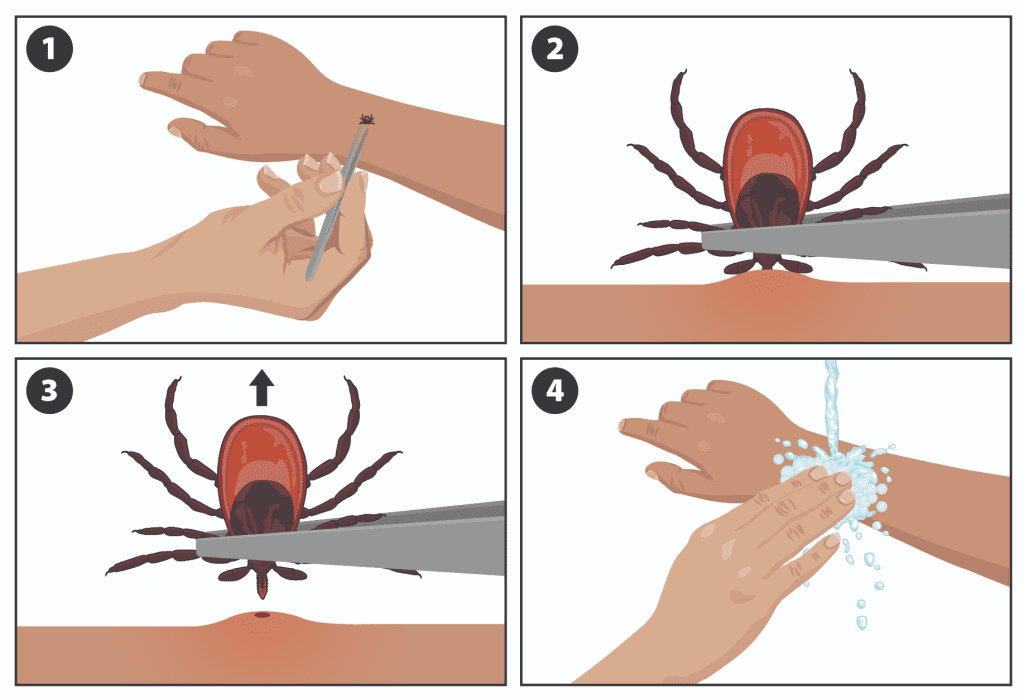Let’s face it—ticks are already on our hit list. These tiny, blood-sucking insects lurk in tall grass, sneak onto your skin without a sound, and bury their heads in like they own the place. They’re known for spreading Lyme disease, sure. But what if we told you a tick bite could also make your favorite steak dinner your worst enemy?
Yup, there’s a bizarre and serious condition out there called Alpha-Gal Syndrome (AGS)—and it could turn you allergic to red meat overnight. If you’ve never heard of it, don’t worry. Most people haven’t. That’s why we’re breaking it down for you here—from symptoms to causes and how to stay safe.
What Is Alpha-Gal Syndrome, Exactly?
Alpha-Gal Syndrome is a rare food allergy triggered not by something you eat, but by a tick bite. The bite exposes you to a sugar molecule called galactose-alpha-1,3-galactose—or just “alpha-gal” for short. This sugar is found in most mammals (think beef, lamb, pork), but not in humans or apes.
When the tick introduces alpha-gal into your bloodstream, your immune system may go into defense mode. That’s when the trouble begins—your body now sees red meat as the enemy.
Why This Allergy Is So Strange
Here’s the kicker: the allergic reaction doesn’t hit immediately like a peanut allergy. Instead, symptoms of AGS typically appear three to six hours after eating red meat. That delay makes it hard to connect your food to the reaction.
So if you had a burger for dinner and woke up itchy at 3 AM with stomach cramps? That might be the red meat allergy creeping in.
Most Common Symptoms of Alpha-Gal Allergy
The symptoms can vary from annoying to life-threatening. Here’s what to watch out for:
- Hives or itchy rash
- Nausea or vomiting
- Diarrhea or abdominal pain
- Shortness of breath
- Dizziness
- Swelling of lips, face, or throat
- Anaphylaxis (a rapid, severe allergic reaction)
Video : Ticks Can Spread An Allergy To… Red Meat?
If you experience anaphylaxis, it’s a medical emergency. Immediate treatment with epinephrine (Epi-Pen) is critical. Don’t wait—get help right away.
Where Do These Ticks Come From?
In the U.S., the main culprit is the lone star tick, easily recognized by the white dot on its back. But don’t let the name fool you—it’s not just in Texas. These ticks are spreading across the Southeast, Midwest, and even into northern states.
In Europe and parts of Asia and Australia, different species like the blacklegged tick have also been linked to AGS cases. So whether you’re hiking the Scottish Highlands or camping in Tennessee, the risk is real.
How to Spot and Remove a Tick Properly
Okay, let’s get practical. You’re out in nature and find a tick latched onto your skin. What now?
- Don’t panic—grab some fine-tipped tweezers.
- Grip the tick as close to the skin as possible.
- Pull upward slowly and steadily. No twisting!
- Clean the bite area with soap and water or alcohol.
- Watch for symptoms in the days and weeks that follow.
Be careful not to leave the tick’s head embedded in your skin—that can cause an infection. If you’re unsure, it’s always a good idea to let a healthcare professional handle it.

Lyme Disease vs. Alpha-Gal: Not the Same Thing
Most of us associate tick bites with Lyme disease, and for good reason. Lyme symptoms can include:
- Bullseye rash around the bite
- Fever and chills
- Headaches
- Joint and muscle aches
- Long-term fatigue if left untreated
But Alpha-Gal Syndrome is a different beast entirely. Lyme is bacterial and treatable with antibiotics. AGS is an allergic immune reaction with no cure—only management.
The Long-Term Reality of Living with AGS
Once you develop Alpha-Gal Syndrome, red meat is no longer on the menu. But it doesn’t stop there. Other animal-derived products can also cause reactions, including:
- Dairy (milk, cheese, yogurt)
- Gelatin
- Some medications (which contain animal-derived ingredients)
It’s a whole new level of label-checking. Some people even develop sensitivities to airborne meat particles—like the smell of bacon sizzling on the stove. Tough, we know.
Can You Ever Eat Meat Again?

Sadly, there’s no guaranteed “cure” for AGS. Some people report that their symptoms lessen or disappear after years without any tick exposure, but many continue to live with the allergy indefinitely.
Avoiding all mammal-based foods, using plant-based alternatives, and carrying an Epi-Pen are often the new normal.
How to Protect Yourself from Tick Bites
Your best bet? Prevent the bite in the first place. Whether you’re hiking, gardening, or just walking your dog:
- Wear long sleeves and pants
- Tuck pants into socks (yes, it looks dorky—but it works!)
- Use insect repellent with DEET or permethrin
- Stick to clear trails—avoid tall grass
- Check your skin (and your pets!) after outdoor time
- Wash and dry your clothes on high heat
Get Checked if You’ve Been Bitten
If you’ve been bitten by a tick—especially in a high-risk area—and you start experiencing weird allergic reactions after eating meat, talk to your doctor. A simple blood test can confirm if you have developed Alpha-Gal Syndrome.
Video : Alpha-Gal Syndrome | Food Allergies
The good news? You’re not alone. Awareness of AGS is growing, and so is research into better treatments and detection.
In Conclusion: Ticks Might Be Small, But the Consequences Aren’t
You started reading this thinking ticks were gross. Now you know they’re also potentially life-changing. While Alpha-Gal Syndrome is rare, it’s real—and it’s something more of us should be aware of.
So next time you’re out in nature, suit up, spray down, and stay alert. Because no one wants to find out they’re suddenly allergic to burgers after a walk in the woods. And if you’ve already had a run-in with one of these sneaky bugs? Keep a close eye on how your body reacts—and don’t hesitate to get checked.
Red meat might be delicious, but no meal is worth risking your health.


